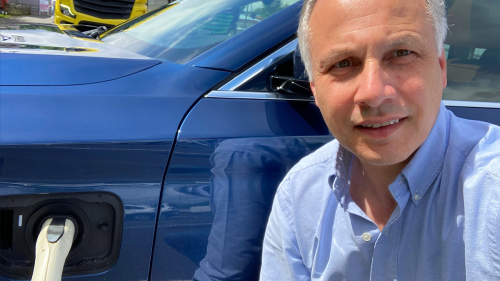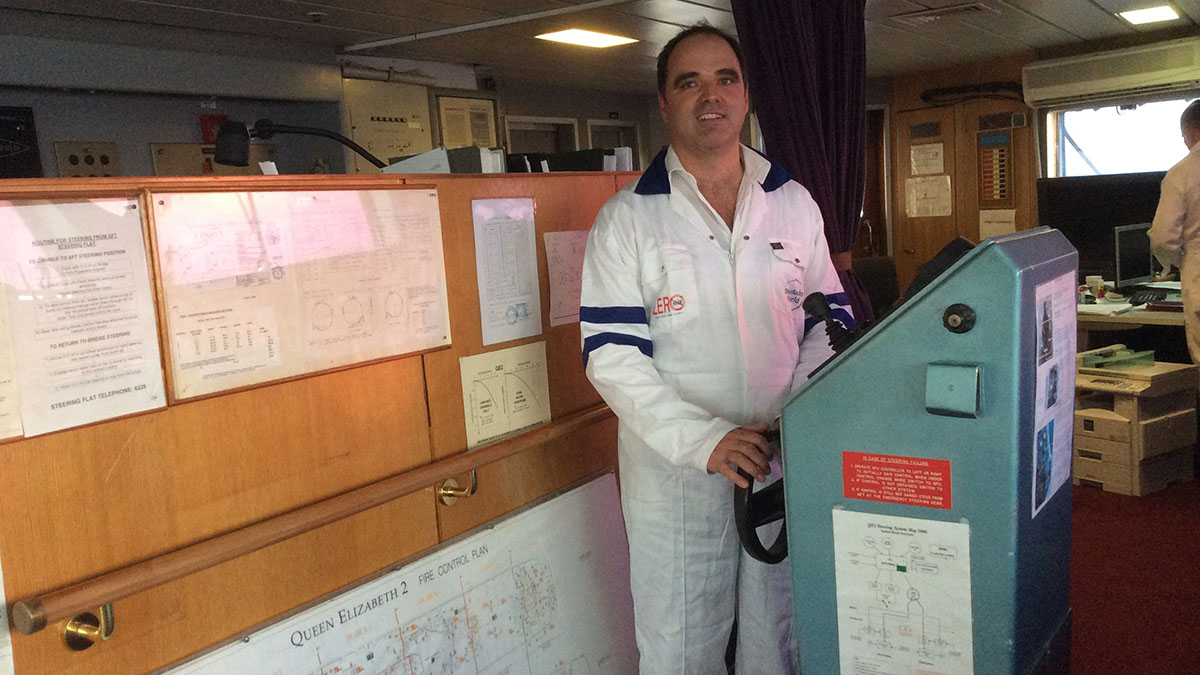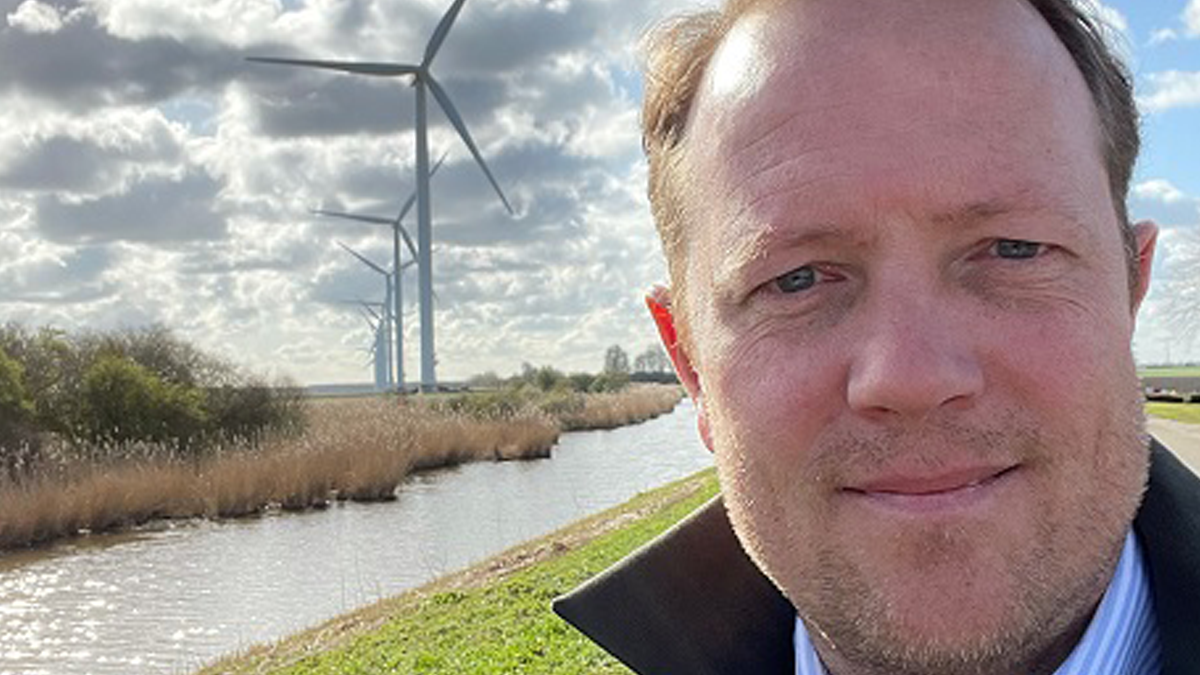The automotive sector and sustainability
Each industry is different, but they're all dealing with climate change and sustainability. What’s happening in the automotive sector? Thorsten Mehltretter, global lead of ING’s automotive sector, gives his perspective.

What were the trends pre-corona, and what impact did the coronavirus have?
There were several disruptive trends in the auto industry: electrification; autonomous driving; cars that are digitally connected; and car sharing. The most notable is the electrification trend, because there’s significant pressure from governments in that direction.
When the pandemic hit, overall demand for cars dropped significantly. It’s a cyclical industry, so when the economy goes down, people think twice about buying a new car.
However, several governments agreed to provide financial support and incentives to boost demand. They used the opportunity to speed up electrification, for example through subsidies and tax breaks when buying an electric vehicle. In this way, Covid-19 has accelerated the trend towards electric cars.
Where does change have to come from – governments, consumers, banks, companies? Which should play the biggest role?
I think it’s a combination. You can’t do it without government, which is also where it started. Governments, particularly in Europe but also in China, put out ambitious regulation that new vehicle fleets from carmakers cannot emit more than a certain amount of CO2 per kilometre. This forced the industry to change.
Then yes, the carmakers themselves. If they don’t change, then nothing’s going to change. Then consumer behaviour. Although let’s be honest, I think when deciding to buy a car, most people look at the environment but also their wallet and budget. They may be willing to spend a little bit more for a cleaner vehicle, but not a lot more.
I’d say banks make a difference when they provide certain incentives to the automotive companies, like sustainability improvement loans, where the client gets a discount if they reach certain sustainability targets. And on the retail side, banks are financing cars through loans and leases. In Germany for example, ING provides customers with a discount on a loan to buy an electric vehicle.
Do you think the money is the biggest barrier for people in driving green cars?
Money plays a role but is becoming less of a factor because of government incentives, increasing economies of scale and the pricing policy of carmakers, who need to sell electric vehicles in order to comply with regulation.
A big issue is typically the charging infrastructure. You have this so-called range anxiety, which is real. If you’re running out of gas, someone can come by with a gallon of gas and put it in your tank and off you go. With an electric vehicle it’s not that simple. Getting the charging infrastructure up and running is essential. In the interim, plug-in hybrid vehicles will play a role. If you have a range of, say, 40km that is usually enough for the daily commute. For longer distances you still have the combustion engine.
Plug-in hybrids are popular in Germany, for example, where the industry is driven by corporate fleets. You get a significant tax break if your corporate car is a plug-in hybrid vehicle. But over time they aren’t very efficient. They have both a combustion engine, plus batteries and an electric motor, so they’re carrying the weight of all that. The expectation is that over time, people will move towards battery-electric vehicles, so without a combustion engine.
Also, I think it’s the lack of models available. I experienced this myself, when looking for a car for my wife. There wasn’t a lot out there a few years ago. But that is changing quickly.
You mentioned infrastructure – how is that developing?
The infrastructure is crucial. If you can’t charge your car then you’re in trouble. Although there are several providers of charging stations in cities and municipalities, the problem is when you travel on the highway to go on a road trip or vacation, for instance. This means many people can only use an electric vehicle as a second car.
So that’s why carmakers (VW Group, BMW, Daimler, Ford and later Hyundai) came together and said ok if we want to sell our electric vehicles we have to build a charging infrastructure. They created a joint venture called IONITY, which ING helped finance. It has the task of setting up 400 fast-charging stations along Europe’s major highways. You no longer have to be afraid that if you’re going to southern France you won’t be able to find a charging station on your way.
But still, once you get off the highways you’ll always need to find somewhere to charge the car. Often there are problems with paying too, as different providers have their own payment systems. Sometimes you read these reports or talk to people with an electric vehicle and hear that it’s a bit of a nightmare. We still need a lot more charging stations throughout Europe, and in particular we need a common platform for paying so you don’t need multiple credit cards or memberships with mobility service providers.
We’ve committed to aligning our automotive portfolio with the two-degree pathway. How are we doing that?
Two things. We are definitely one of the leaders in providing sustainable finance structures, and certainly in the automotive industry we have quite a few first-time deals. So by providing green financing is one way we’re doing it.
The other thing: with the Terra approach, ING committed to steer our lending portfolio in line with the goals of the Paris Agreement, i.e. towards clients that are sustainable or willing to make the transition. For instance, for automotive clients we have selection criteria with a number of points on their commitment to sustainability and their ability to align with the energy transition.
How does the dialogue with our clients usually go? What topics do you discuss, what is the atmosphere like in those discussions?
Clients are receptive. That has a lot to do with the shift in sentiment in society, especially around the auto industry, which, to be blunt, is sometimes seen as a ‘dirty’ industry. That’s obviously something their top management wants to change, for one thing because of a genuine concern for the environment but also to sell their cars. So you’re already getting a big push from the top down.
Secondly, there are more investors looking for green investments. So you have people putting their money into sustainability funds. There’s a lot of investor money out there that’s chasing not enough sustainable finance opportunities.
It used to be that when CFOs asked “what’s in it for me” when talking about sustainable finance, you’d say honestly, commercially, nothing. Just that they’re doing the right thing and communicating to the capital markets that they’re taking it seriously. Now you can make the case that it’s making a difference commercially. For instance, by placing a green bond in the capital markets, they get a bigger order book because they attract new investors. They benefit commercially – it’s not huge but it is measurable. That’s also made a difference. Right now pretty much every one in the industry is taking it seriously.
“There are different types of hybrid vehicles. Micro-hybrid vehicles use something called ‘recuperation’ to create electricity from braking. When you brake, you don’t use the brake pads in the wheels but an internal generator that creates electricity from the forward momentum. You can use that electricity for the lights, radio, whatever. Plug-in hybrid cars can drive entirely on an electric motor or with a combustion engine or a combination of the two. You can recharge a plug-in hybrid just like you would a fully electric car. Other hybrid vehicles use gasoline and the electricity for the motor comes from the recuperation process.”



